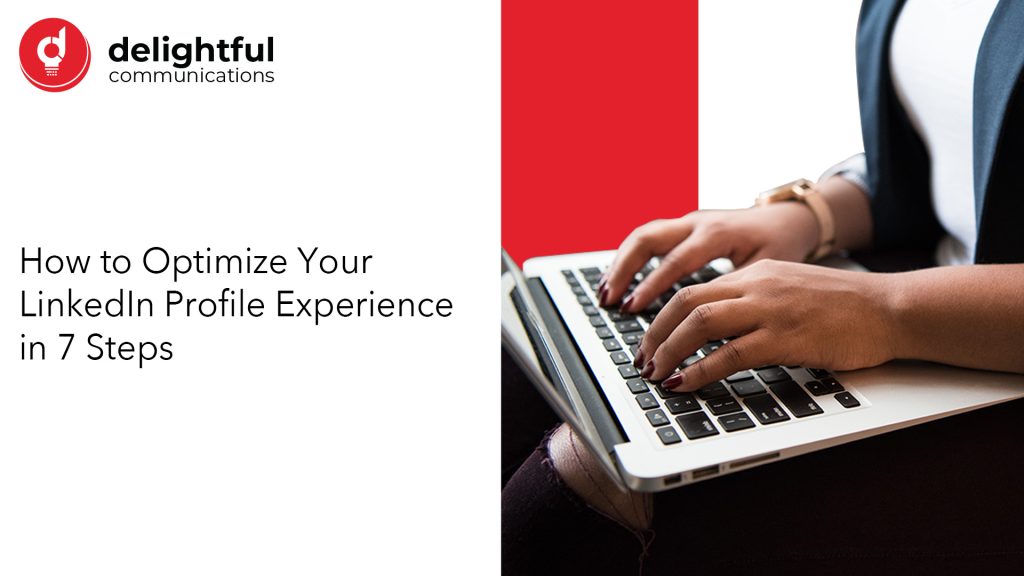LinkedIn has become one of the most important tools you can use to help yourself grow professionally. As a thriving, interactive community of more than 700 million professionals worldwide, it’s become a crucial place to set out your professional stall and make a great impression.
Whether you’re on the hunt for your next career play, boosting your business growth, or looking to increase visibility and reach in your industry, crafting a well-done profile experiences section can go a long way to demonstrate your value and build credibility.
By following these 7 steps, your LinkedIn experiences can deliver impact, provide context, and help build your personal or leadership brand. Here’s how to take it beyond the standard resume, helping you stand out from the competition.
Make sure your past roles are accurate and detailed
Begin by doing a quick accuracy check. You don’t need to list every job you’ve ever had, but you should list every position that is relevant to your career. If you have a long professional history, detail out the last 10 years of experience and make sure your start and end dates are correct.
Link company pages to your experiences to add context
When you add a new position, you have the option of selecting your organization’s LinkedIn page, if they have one. This will show up as a clickable link to the company page, making it easier for people to find out more about the organization’s services or offerings. If the business didn’t have a LinkedIn page when you added the role, check back from time to time to see if they have created one you can link to, even if you aren’t with the organization anymore. This is an easy way for people to learn more about your professional life.
Include impactful intros to immediately impress
For each position listed, include a 1-3 sentence introduction. This is a broad overview of the organization and your role, specifically. Don’t spend time restating the company name, your title, and the location. Dig a little deeper. Share context about the organization, your role and, at a high level, what value you brought or bring.
Create a bulleted list of key messages
Underneath the introduction, create a bulleted list, highlighting key aspects of what you did and the impact you made. Make it easy to skim by keeping each bullet point under 3 sentences. Check your grammar, spelling, punctuation, and make sure you aren’t using unnecessary jargon or “fancier” words when a simple one would do. This is not the place to show off your lexicon vocabulary. Keep it simple.
Pro tip: Draft this in Word first, then copy/paste the list into LinkedIn. You’ll notice that the tab between the bullet points is gone, but that’s okay! Add 5 spaces between the bullet and the text to create that distance.
It may not seem like much but taking the time to format this information will go a long way. Not only is it more readable, it also demonstrates professionalism and polish which reflects well on you and your personal brand.
Prioritize information for easy reading
While it’s tempting to showcase your versatility by listing everything you’ve ever done in a role, the truth is, that will make it harder for your reader to know what’s important.
Put your best foot forward by listing the most important points at the top. Keep it under 10 bullet points and leave off minor details if they aren’t relevant to what you’re doing now.
Pro tip: If you aren’t sure what to keep and what to cut – think about your current role, or what you’d like your next role to be. What skills and experiences are most relevant? If you can demonstrate a history of having successfully used that skill throughout your career, it will boost your credibility.
Ensure you share the how behind your achievements
Instead of listing your duties or responsibilities, showcase your value and accomplishments. Whenever possible, use data. Data gives your reader a sense of the scope and importance that accomplishment had.
An example I use in our personal branding workshops is, instead of saying I “streamlined processes,” I might say “Introduced eSignature tools into the hiring process, which reduced management approval process time by 45%.” This provides much more context into what actions were taken and what impact it had on the business.
You don’t need to list every single example of how you streamlined processes. Providing a powerful, detailed example will be more valuable to your reader than a broad, vague statement. It isn’t hard to extrapolate that you probably streamlined more processes than the one example. You can always provide more examples in conversation.
Cut the buzzwords and keep the keywords
Do you know the difference between a buzzword and a keyword? Keywords are important descriptors that help your audience understand what you do. Buzzwords may seem like they’re important information, but often they are momentarily popular and overused words that don’t provide useful information.
For keywords, think about what terms a client or recruiter would search to find you. For example, I might use personal branding, program manager, marketing, social media strategist, or project management.
Buzzwords tend to be less concrete. Every few years, LinkedIn releases the top 10 buzzwords users have been using in their profiles. The latest report in 2018 showed these to be the most overused in the previous year:
- Specialized

- Experienced
- Leadership
- Skilled
- Passionate
- Expert
- Motivated
- Creative
- Strategic
- Successful
You may be passionate, but if you’re applying for a job and 9/10 applicants state that they’re passionate too, how does that provide the potential employer or recruiter useful information about you? You want to differentiate yourself from others, even if that’s picking another synonym (although I’d urge you to dig deeper instead and provide more details about what makes you passionate or how that shows in your work ethic).
If I say, “I’m an experienced marketer who uses creative and strategic methods and am motivated to make my clients successful,” do you actually know anything about what I do?
Take out the subjective and “fluffy” language and replace it with something more interesting and informative.
Instead of the above, I’d say, “I mix the art of language with the science of search engine optimization to develop authentic personal brands that help my clients reach their personal and professional goals.”
While you’re updating your LinkedIn profile, don’t forget to make sure you aren’t making one of the most common mistakes we come across – a hidden profile photo.
Like a resume, your LinkedIn experiences section can help you or harm you. Unlike a resume, it’s on display all the time, not just when you’re job hunting. Make sure it’s telling the story about you that you want to tell.
To find out more about using your personal or leadership brand to help you reach your goals, subscribe to The Personal Brand Lab, learn about our personal branding services, or send us a note with your questions.
Don’t forget to: follow @Delightful on Twitter, like the Delightful Facebook Page, and join us on LinkedIn.
Jenn Spicer – Personal Brand Program Manager at Delightful



